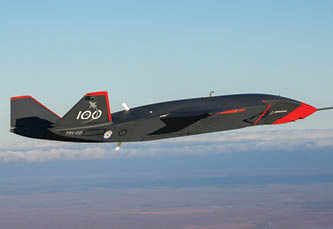Defence has a long and proud history of showcasing its cutting-edge assets and highly skilled personnel at public events throughout Australia.
Over the years, countless thousands of air show patrons have cast their eyes to the skies in awe of Air Force aerial displays.
Our F-35A wowed the crowds at the Central Coast Air Show at Warnervale airport, NSW, on May 14 and 15.
In the lead up to the show, No. 2 Operational Conversion Unit instructor Flight Lieutenant Ross Bowman gave us an understanding of what it takes to plan and execute an aerial handling display.
How long have you been flying the F-35A for?I have been flying the F-35A for just on four years now. I did my initial training on it over in Phoenix, Arizona.
How do you decide the individual elements of an aerial display at an air show?I looked at the Classic Hornet display and the USAF F-35A display and picked out the highlights from both of them. From there I spent a few months working in the sim practising the individual elements, trying to find a sequence that worked well together. It’s not as simple as flying each element back to back; there is a lot planning that goes it to each part to make sure you finish a manoeuvre that will set you up for the next one. For example, I fly the max rate turn a little slower than the USAF display as it sets me up better for the loaded roll at the end. If I flew it faster, the loaded roll wouldn’t work how I want it to.
Are there any elements of the display that are for ‘display only’ or is the display a sequence of usual manoeuvres you would practise or train for?The display shows off what the jet can do, either slow-speed handling, its speed or the alpha (also known as angle of attack) it can generate. These are things we use throughout the different elements of fighting we conduct in the F-35A. What we don’t normally train to do is conduct these manoeuvres at low level. In training, we have a simulated ground that we will fight to so, if something did go wrong, we can safely recover the jet and don’t lose either a pilot or aircraft.
How far out from the air show do you confirm the display elements?I usually have an idea of events coming up that I may be tasked with but it may only be two to four weeks when I get the tasking. There are a lot of things that go in to planning and allocating who does the display. If the squadron has other taskings or I am unavailable, then the display may get tasked to another pilot and they will conduct a handling display. I do the aerobatic display, which allows me do some extra things that a handling display is not authorised to do. For example, I can fly inverted and the more advanced manoeuvres that need a dedicated work-up and qualification for.
Can you outline the amount of practice you undertake in the lead-up to the air show?I try to do a display practice in the jet every three weeks. That keeps me current with the display and flying low-level aerobatics. Leading up to a show, I do a minimum of two simulator rides where the display will be conducted. I will practise my high show and also my low show in case there is weather that precludes me from doing my high show. In these sims, I also get emergencies thrown at me at varying times so I can practise dealing with the unplanned scenarios. In the week or two prior to the display, I will fly one or two displays in the jet. The simulator is good but it doesn’t give you sensation of real flying and flying in close proximity to the ground.
Talk me through your routine from arriving at the base on the day of the display – the preparation and pre-flight checks.I normally try and relax at home for as long as possible so I am fresh for the display. I get to work about an hour before I step to the jet and that is my time to look at the weather and any factors that could cause an issue on the day. Thirty minutes before, I sit in a chair, close my eyes and visualise the routine from start to finish. It’s something we get taught to do right at the start of the pilot course. I will go through that two to three times. Ten minutes before I step, I will chat to the authorising officer about the display and other factors. These could be weather, obstacles, other traffic or I had a bad sleep and am feeling a little fatigued. The start-up of the aircraft is the same as any other flight, however, I do some extra checks for the low-level routine.
What goes through your mind when you are doing the display? Are you aware of the crowd?I’m normally pretty nervous from when I step to the jet until I start the display. On the first pass, I’ll have a quick look at the crowd area to make sure it all looks as planned but, once I do the first pass, I’m concentrating on the display.
Tell us more about your display, like speeds, altitutdes and names of the manouvres.I fly at speeds of up to 550 knots and as slow as 100 knots during the slow-speed/high-alpha pass. Most of the display, I fly as low as 200 feet and I reach a peak of 5500 feet. There are some high g-force turns where I can get up to the aircraft limit of 9Gs. My favourite manoeuvres are the slow-speed pass, flying at 100 knots at 500 feet and 35 alpha. I conduct manoeuvres like the pedal turn, which is essentially a 50 alpha flat-spin. A lot of people like the loaded rolls and the vertical departure with the wall of fire pyrotechnics.
Main picture Flight Lieutenant Ross Bowman at RAAF Base Williamtown. Defence image.













